Now I'll write the content following their detailed instructions, making sure each paragraph is 90-110 words with engaging opening sentences and descriptive H2 headings that include the core subject.Based on my comprehensive research, I now have a thorough understanding of 1980s kitchen design trends and elements. Let me create content about 20 specific 1980s kitchen ideas following your detailed instructions.
The 1980s represented a bold departure from the earth tones of the previous decade, ushering in an era of unapologetic design choices that transformed kitchens into vibrant social spaces. This decade embraced the philosophy that more was indeed more, introducing striking color combinations, innovative materials, and geometric patterns that challenged traditional design conventions. From the iconic Euro-style cabinets to revolutionary track lighting systems, 1980s kitchens became laboratories of creativity where functionality met flamboyance. These design elements created spaces that were both practical for the modern family and visually striking enough to serve as entertainment hubs. Understanding these distinctive trends offers valuable inspiration for today's homeowners seeking to capture that signature retro energy.
1. Euro-Style Kitchen Cabinets with Oak Trim Accents
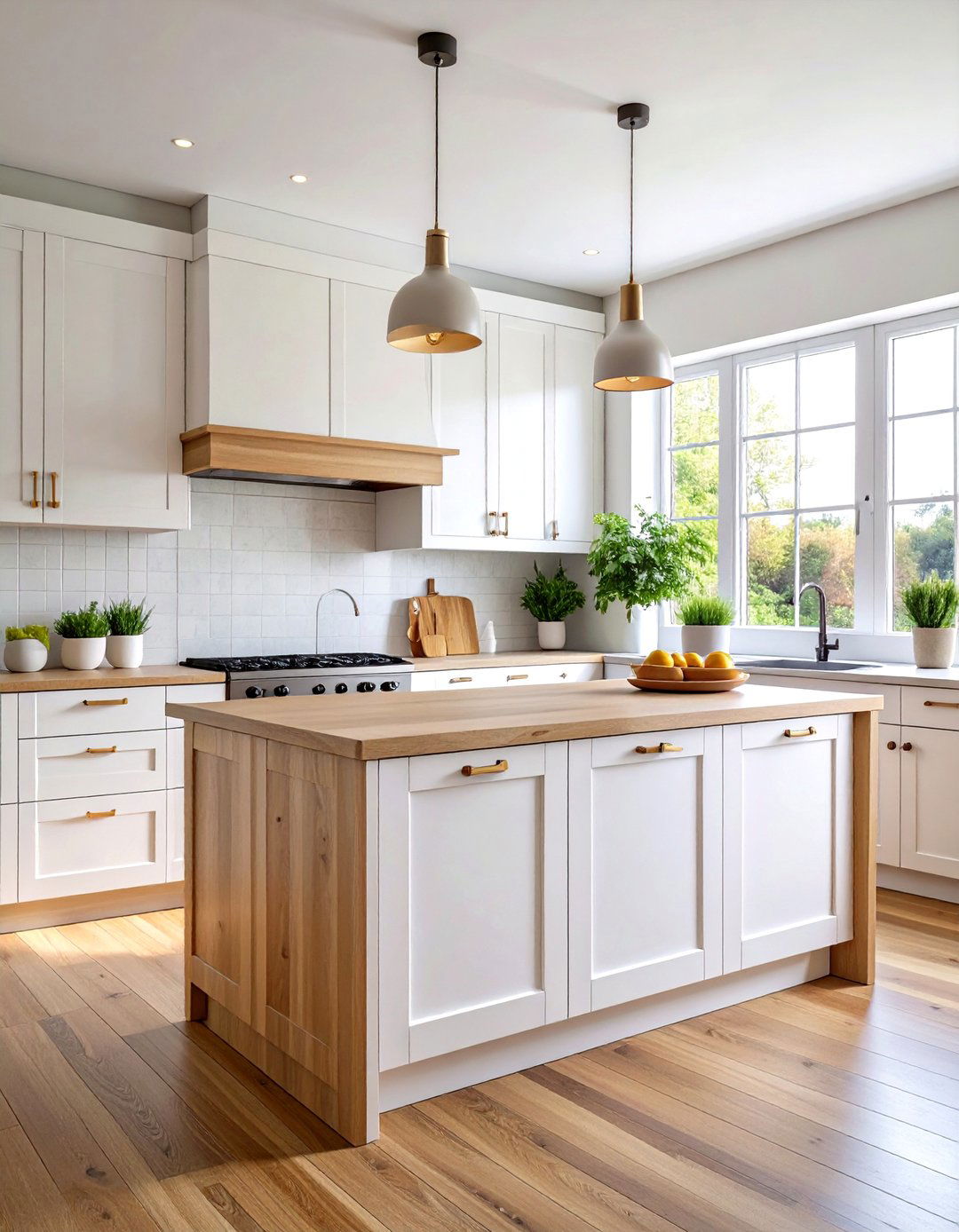
Perhaps no single element defined 1980s kitchen design more than the Euro-style cabinet featuring white laminate fronts with integrated oak trim handles . These cabinets represented the decade's embrace of streamlined European aesthetics while maintaining the warmth of natural wood accents. The oak strips functioned as both decorative elements and practical pull handles, eliminating the need for separate hardware. Made from durable melamine surfaces, these cabinets offered easy maintenance and remarkable longevity . Modern interpretations can honor this classic style by painting the oak trim to match contemporary color schemes while preserving the distinctive horizontal lines that made these kitchen cabinets instantly recognizable and surprisingly functional for busy family life.
2. Bold Neon Kitchen Color Schemes and Accents

Neon colors dominated 1980s kitchen design, with hot pink bread bins, lime green canisters, bright green cabinets, and electric blue bar stools creating high-contrast statements against black and white backgrounds . This fearless approach to color represented the decade's rejection of subdued palettes in favor of energetic, personality-driven spaces. Kitchen designers incorporated neon shades through small appliances, backsplashes, and decorative accessories that could easily be updated as trends evolved. Today's kitchens can capture this electric energy through strategic pops of neon in stand mixers, lighting fixtures, or colorful tile accents . These vibrant touches instantly transform neutral kitchens into dynamic spaces that celebrate the optimistic, bold spirit characteristic of 1980s kitchen design and entertaining.
3. Track Lighting Systems for Kitchen Task Illumination
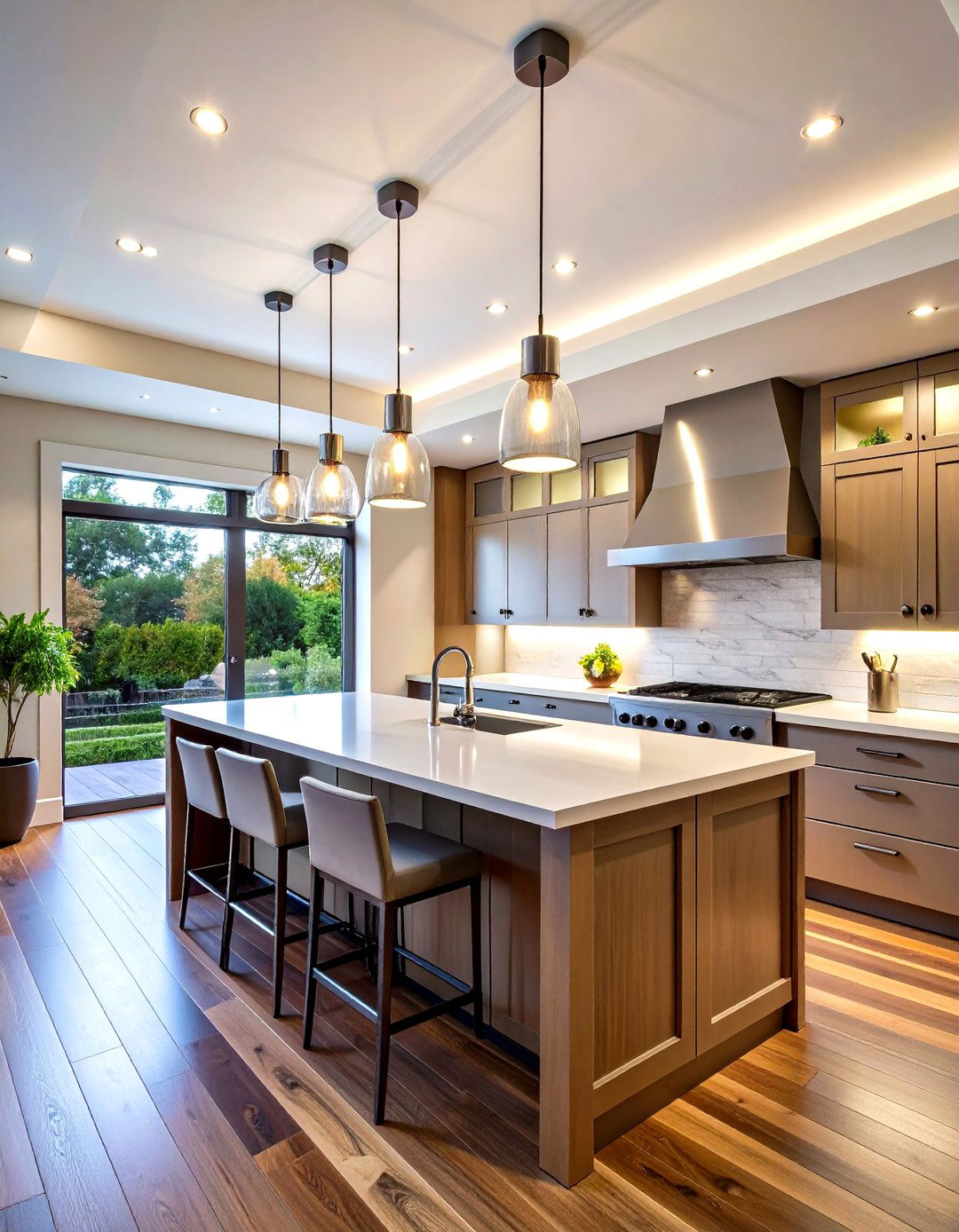
Track lighting emerged as the sleeker, more modern alternative to fluorescent box lights during the 1980s, appearing everywhere from kitchen islands to countertops . This innovative lighting solution offered unprecedented flexibility, allowing homeowners to direct illumination exactly where needed for food preparation and dining. The decade's lighting embraced futuristic aesthetics using materials like chrome and aluminum that defined the era's high-tech approach . Track systems could accommodate multiple fixtures, making them perfect for kitchens that served multiple functions as family gathering spaces. Modern track lighting maintains this practical legacy while incorporating LED technology and refined finishes that complement both contemporary and retro kitchen aesthetics, proving the enduring value of this 1980s innovation.
4. Kitchen Skylights for Natural Light Enhancement
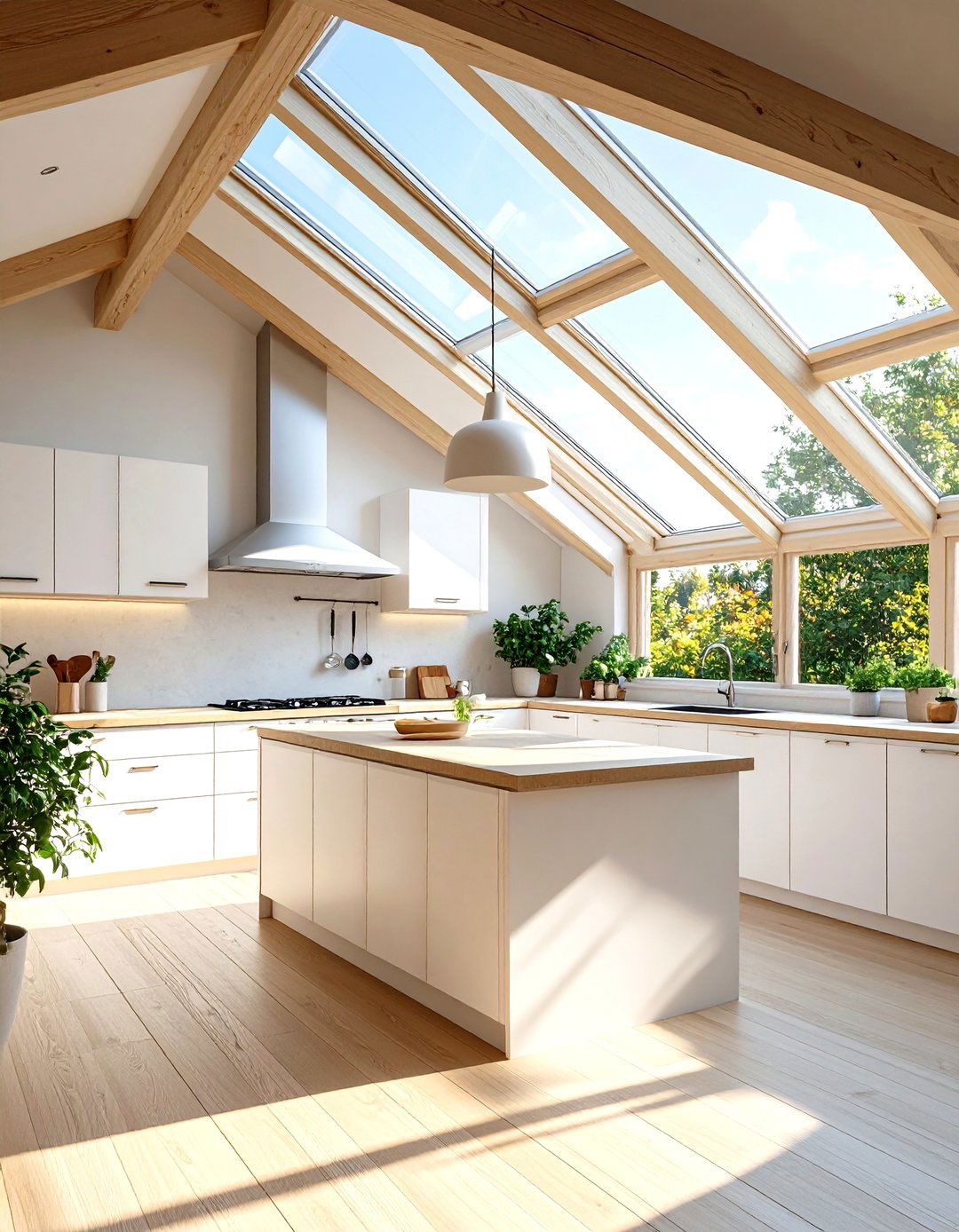
Skylights became a huge trend in 1980s kitchens, especially in new builds, with having one in the kitchen considered the chef's kiss . These architectural features transformed kitchen spaces by flooding them with natural light that made rooms feel larger and more connected to the outdoors. Skylights addressed the decade's desire for bright, airy kitchen environments that moved beyond the darker, more enclosed designs of previous eras. They proved particularly effective above kitchen islands and dining areas, creating natural focal points that enhanced both functionality and ambiance. Many homeowners enhanced skylight effectiveness by incorporating complementary track lighting around the perimeter for evening illumination . Today's kitchen designs continue to benefit from this 1980s innovation, with modern skylights offering improved energy efficiency and automated controls while maintaining that signature sense of openness.
5. Greenhouse Kitchen Windows Above Sink Areas
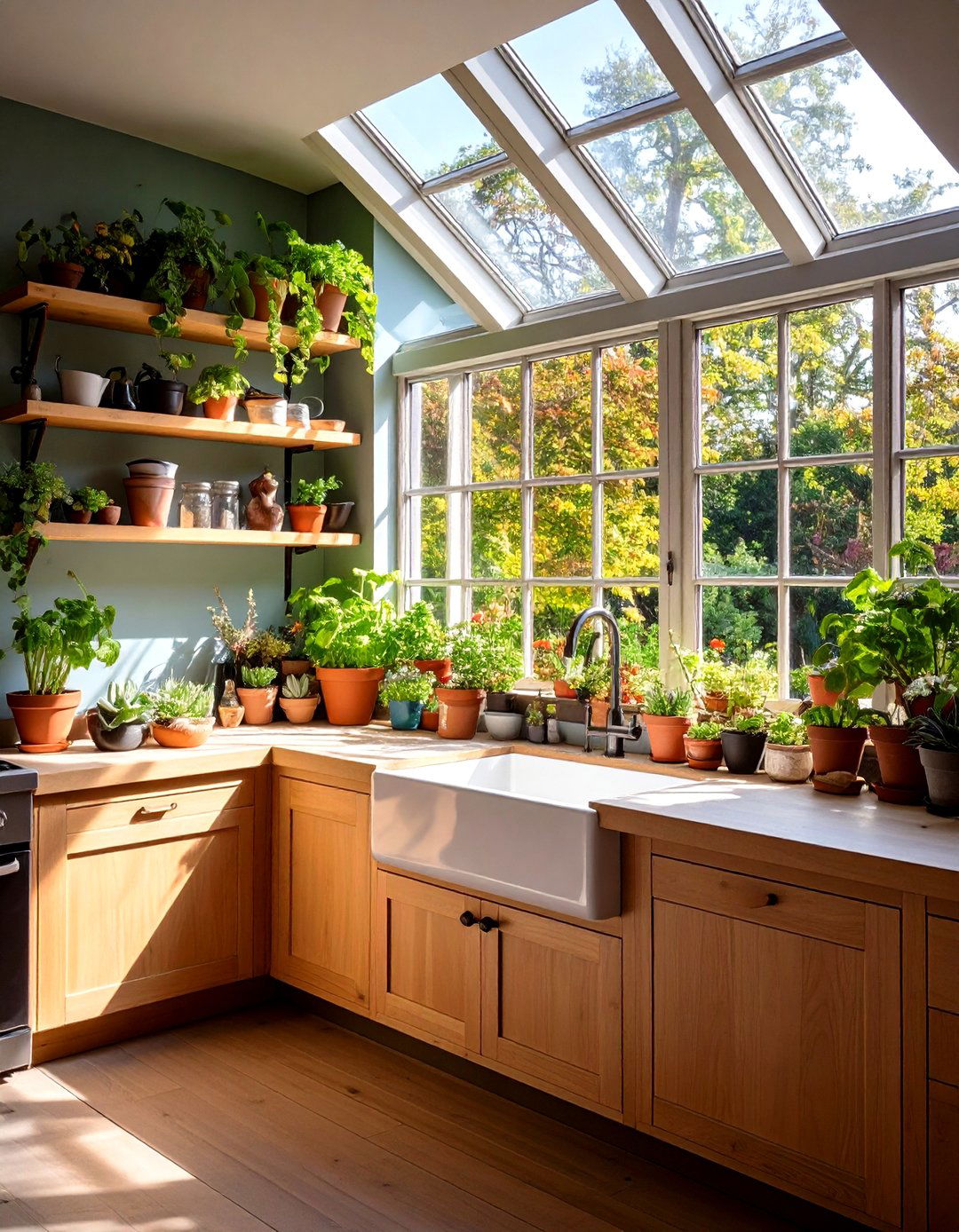
Suburban homeowners in the 1980s enthusiastically embraced greenhouse windows, often installed above kitchen sinks, which extended beyond the exterior of the house and featured shelves for showcasing houseplants, herbs, and cacti . These distinctive windows created mini indoor gardens that brought natural elements directly into kitchen spaces while providing practical growing areas for cooking herbs. The extended design maximized light exposure for plants while creating charming display opportunities that softened the decade's bold design elements. Many 1980s kitchens featured abundant plant life, with greenhouse windows providing perfect spots for modern planters and interesting herbs . Contemporary interpretations of this concept can incorporate sleek modern greenhouse windows that maintain the functionality while updating the aesthetic for today's kitchen designs and sustainable living trends.
6. Ceramic Tile Kitchen Countertops with Grout Lines

The 1980s witnessed the migration of ceramic tiles from backsplashes to countertops, creating distinctive surfaces that added texture and visual interest to kitchen workspaces . This trend reflected the decade's experimental approach to materials and willingness to blur traditional design boundaries. Tile countertops offered durability and heat resistance while providing opportunities for creative pattern combinations and color coordination with other kitchen elements. The grout lines created geometric patterns that complemented the era's love of bold graphics and architectural details. While maintenance requirements made tile countertops less popular in later decades, modern tile technology and improved grout systems have renewed interest in this distinctive 1980s kitchen feature, offering enhanced stain resistance and easier cleaning for contemporary applications.
7. Memphis Design Movement Kitchen Patterns and Shapes

The Memphis design movement burst onto the scene in early 1980s Italy, combining clashing bright colors, geometric shapes, and unapologetically playful patterns that quickly influenced American kitchen design . Led by designer Ettore Sottsass, this movement introduced whimsical color schemes and geometric shapes that challenged traditional design conventions . Kitchen applications included bold geometric backsplashes, patterned floor tiles, and accessories featuring the movement's signature angular forms and vibrant color combinations. The Memphis aesthetic emphasized playfulness and cartoonish elements that could transform ordinary kitchen spaces into artistic statements . Modern kitchens can incorporate Memphis-inspired elements through geometric tile patterns, bold color blocking, or statement lighting fixtures that capture this movement's fearless approach to combining form, function, and pure visual excitement.
8. Lighted Kitchen Ceiling Fans for Air Circulation
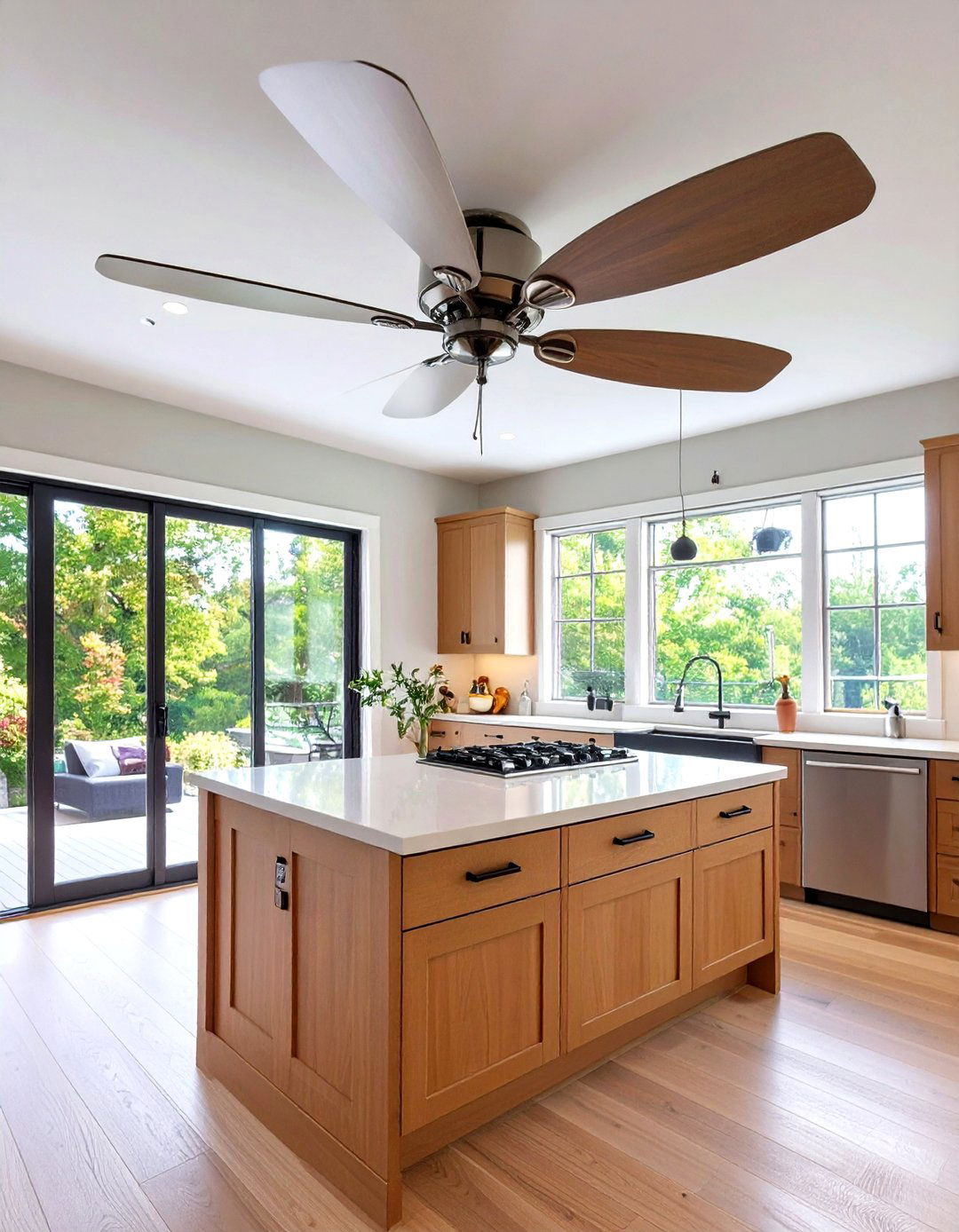
Lighted ceiling fans gained popularity in 1980s kitchens as part of a trio of ceiling treatments designed to add luminescence along with track lighting and skylights . These dual-purpose fixtures addressed both lighting needs and air circulation requirements in kitchen spaces that were becoming larger and more open to adjacent living areas. The combination of fan blades and integrated lighting eliminated the need for separate fixtures while maintaining the clean lines favored in 1980s design. For kitchens in warmer climates, ceiling fans provided practical and energy-efficient cooling solutions . Modern ceiling fans continue this practical legacy with improved motor efficiency, LED lighting integration, and remote controls that make them perfect for contemporary kitchen spaces seeking both function and the casual, comfortable atmosphere that characterized successful 1980s kitchen design.
9. Checkerboard Kitchen Flooring Patterns in Bold Colors

Black and white checkered flooring became a signature 1980s kitchen feature, though the era also embraced bold color variations like red and blue combinations that added energy and personality . The traditional 9-inch square tiles common in mid-century design continued into the 1980s, creating dynamic visual effects that made small kitchens appear larger . This flooring choice reflected the decade's love of geometric patterns and high-contrast design elements. Checkerboard floors worked particularly well in kitchen spaces because they added dimension and visual interest while maintaining practical durability . Today's kitchens can embrace this trend through luxury vinyl tiles, ceramic options, or even painted concrete floors that capture the graphic impact while offering modern maintenance advantages and design flexibility for contemporary living.
10. Pastel Kitchen Color Palettes with Mauve Accents

Alongside bold neon colors, pastel shades gained significant popularity in 1980s kitchens, with mauve being a particularly favored pale pinkish-purple that appeared in curtains, stools, appliances, and shelving . Southwestern color trends reinforced pastel popularity, drawing inspiration from Native American, Spanish, and Mexican cultures with earthy pastel combinations . These softer color choices provided alternatives to the decade's high-energy neon palette while maintaining the era's commitment to moving beyond neutral schemes. Pastel kitchens often featured coordinated elements that created cohesive color stories throughout the space. Modern interpretations can pair pastel pink with deep grey or choose pastel appliances that add character and contrast to contemporary kitchen designs , proving that this gentler side of 1980s color philosophy remains relevant for today's homeowners.
11. Chrome Kitchen Hardware and Metallic Accent Finishes
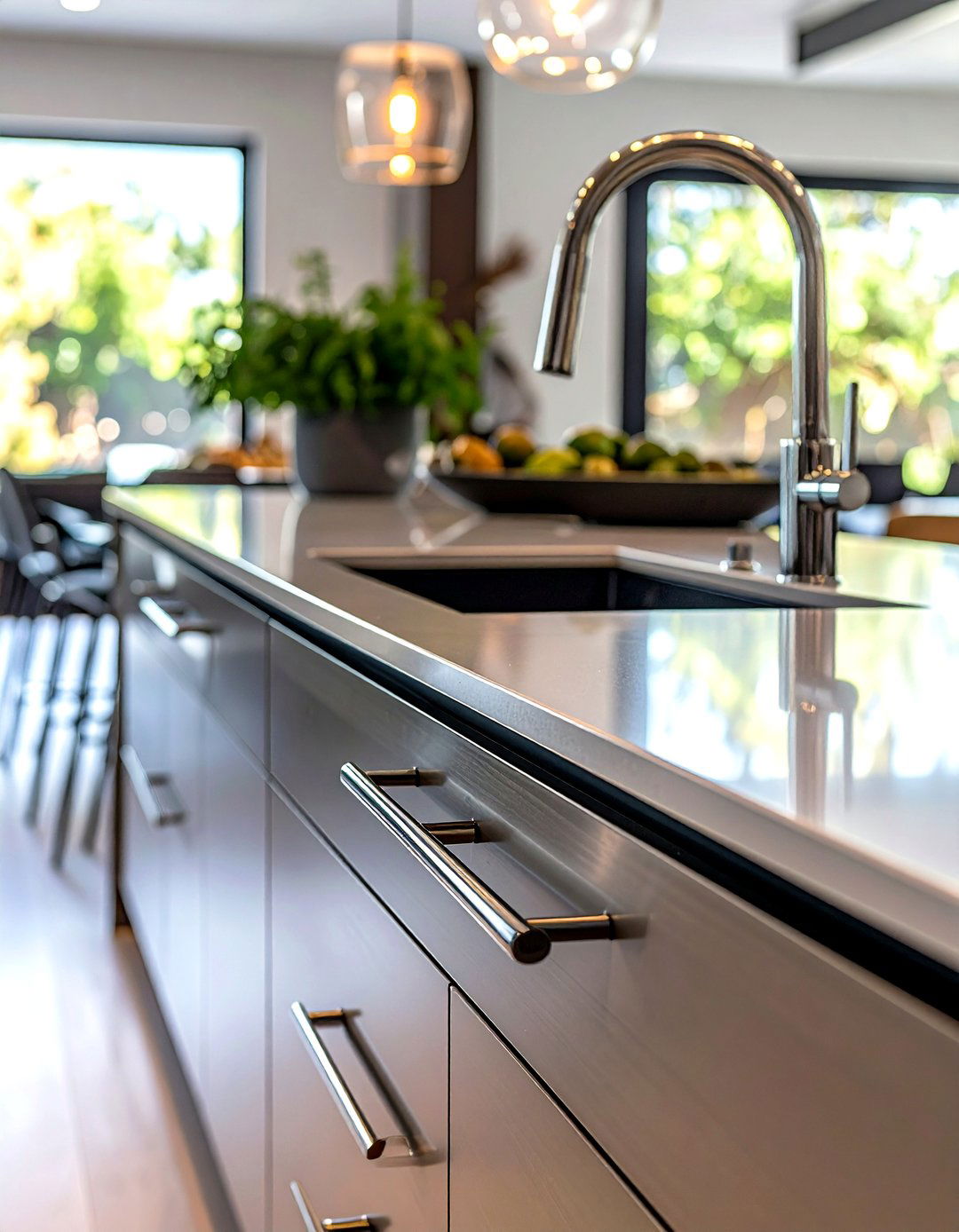
Chrome accents became essential elements in 1980s kitchen design, adding sleek, shiny touches through faucets, handles, and bar stools that captured the essence of retro sophistication . The decade's embrace of futuristic materials like chrome, aluminum, and plexiglass reflected the era's high-tech aesthetic sensibilities . Chrome hardware complemented both bold color schemes and neutral palettes while providing durable, easy-to-clean surfaces perfect for busy kitchen environments. This metallic finish appeared in lighting fixtures and small appliances, creating cohesive looks throughout kitchen spaces . Contemporary kitchens can incorporate chrome elements through cabinet hardware, faucets, or pendant lighting that maintains the clean, modern appeal while benefiting from improved manufacturing techniques that enhance durability and resistance to water spots and fingerprints characteristic of quality metallic finishes.
12. Kitchen Eat-in Office Spaces with Computer Stations
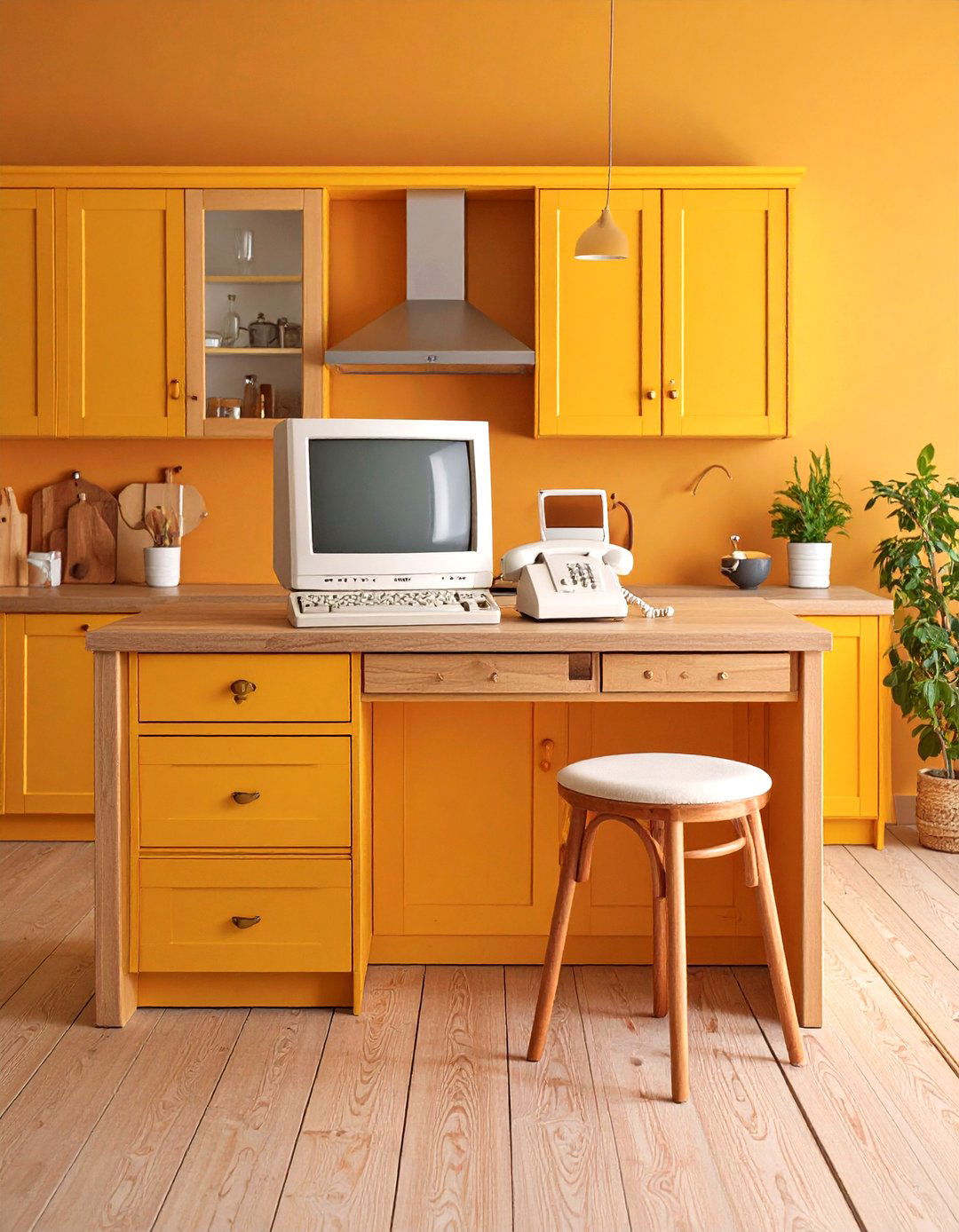
The 1980s introduced the concept of kitchen office spaces, with computer stations joining kitchen islands and dedicated desk areas built into counters that served as family command centers . These work stations weren't discrete, as computers and monitors in those days were chunky and took up considerable room, but families made them functional . Kitchen offices reflected the era's recognition that kitchens served multiple purposes beyond food preparation, becoming central hubs for family communication and organization. A landline phone with extra-long cord typically completed the kitchen office setup, making these spaces ideal for managing household business . Modern kitchen design has evolved this concept into sleek charging stations, built-in tablet docks, and concealed computer areas that maintain the 1980s vision of kitchens as multifunctional family headquarters while adapting to today's technology and aesthetic preferences.
13. Decorative Kitchen Wallpaper with Geometric Patterns
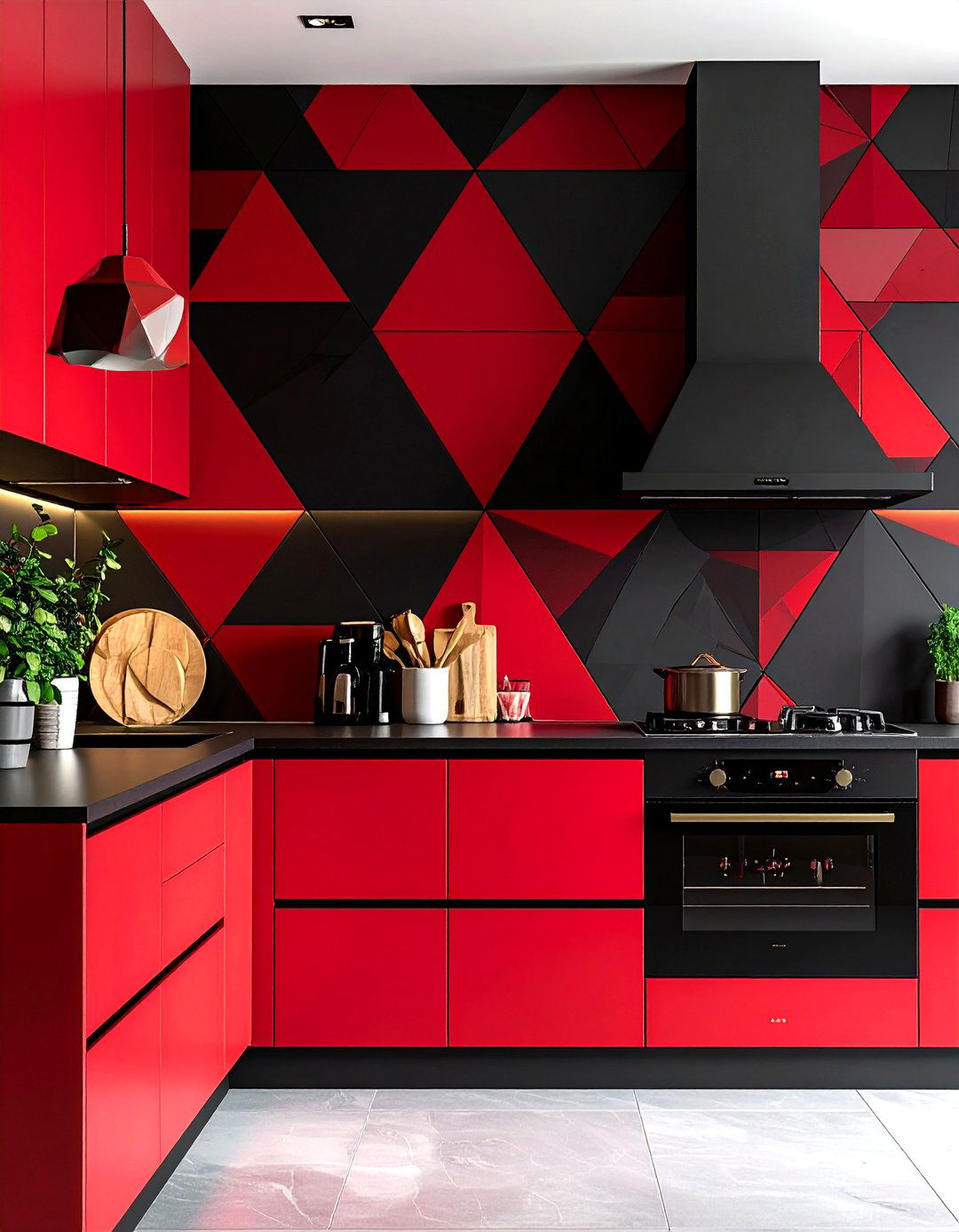
Patterned wallpapers were staples of 1980s kitchen design, bringing bold visuals and dynamic energy through geometric designs with bold lines and bright colors that instantly energized kitchen spaces . While 1980s floral wallpaper featured rich jewel tones that often overwhelmed spaces, geometric patterns provided structured visual interest . Kitchen wallpaper served as an affordable way to introduce dramatic design elements without major renovations, allowing homeowners to experiment with the decade's bold aesthetic choices. Modern applications use wallpaper more creatively, not just on traditional four walls but as accent features and focal points . Today's kitchen designs can embrace this trend through geometric accent walls, wallpapered breakfast nook areas, or bold patterns in powder rooms adjacent to kitchen spaces, capturing the 1980s spirit while maintaining contemporary sophistication.
14. White and Black Kitchen Appliance Color Coordination

The 1980s and early 1990s brought minimalist white, bisque, and black appliances that replaced the colorful options of previous decades . Colorful appliances were phased out in favor of sleek black or white options that complemented the decade's more streamlined aesthetic . This shift toward neutral appliance colors reflected growing sophistication in kitchen design and the desire for appliances that wouldn't clash with changing decorative trends. White and black appliances became standard choices that worked with the era's cabinet styles and emerging stainless steel accents . The coordinated approach to appliance colors established principles that continue influencing kitchen design today, with homeowners choosing appliance suites that complement rather than compete with other design elements, creating cohesive looks that enhance rather than overwhelm kitchen spaces.
15. Linoleum Kitchen Flooring in Bright Color Combinations
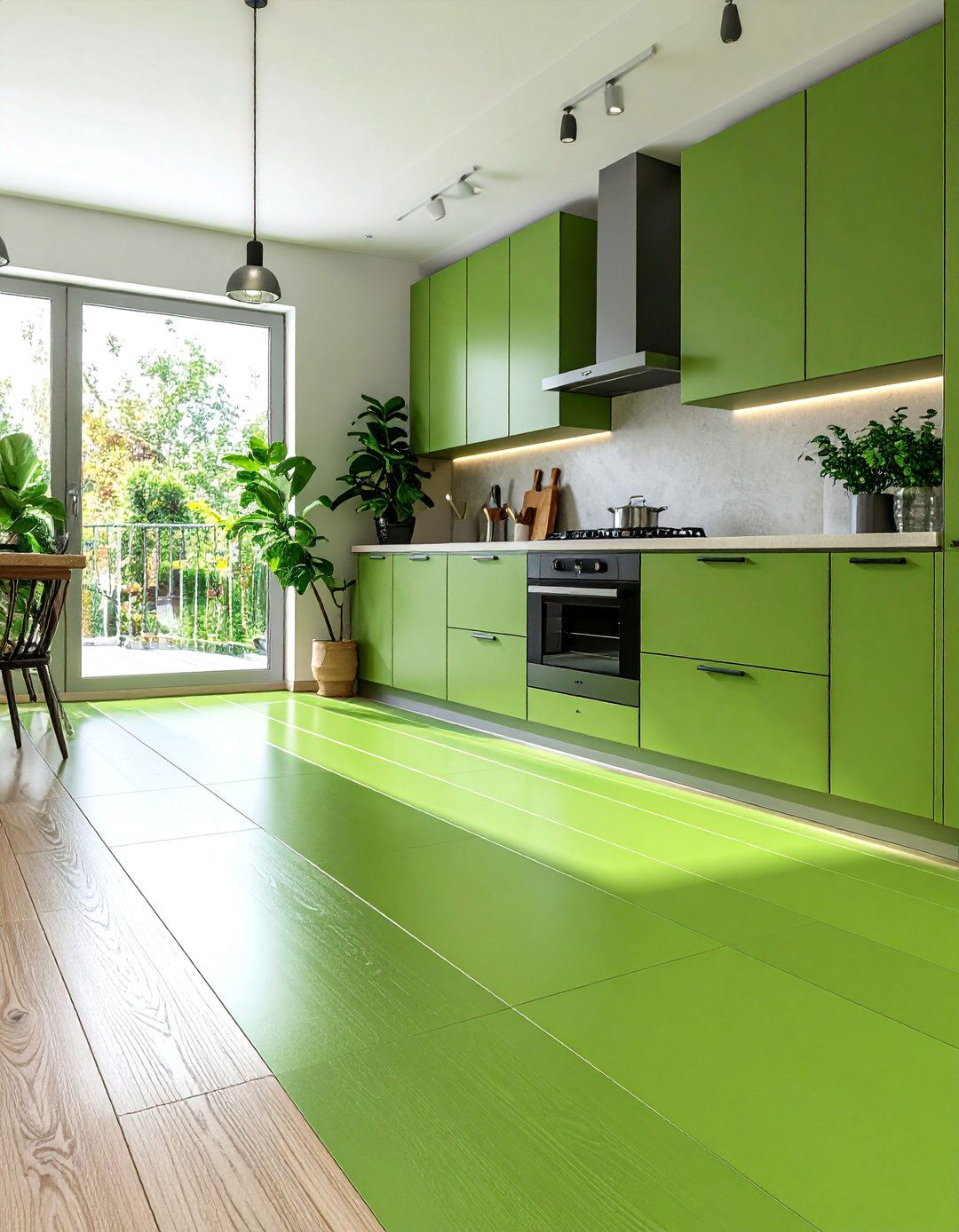
Modern vinyl versions of linoleum became must-have floors in 1980s kitchens, especially popular in bright green, shades of blue, and warm earth tones including the supremely '80s harvest gold color. Linoleum offered cost-effective and hardy solutions for kitchen areas while providing great color options that could brighten spaces . The rise of linoleum flooring made checkerboard floors cheaper and easier to install, keeping geometric patterns popular for everyday consumers. These resilient floors provided practical benefits including easy maintenance, water resistance, and comfort underfoot while delivering the bold visual impact characteristic of 1980s design. Extra-wide rolls practically eliminated seams while offering non-stop colors and patterns that warmed up any kitchen. Modern luxury vinyl and linoleum options continue this tradition with improved durability and expanded design choices.
16. Terra Cotta Kitchen Tile Accents and Backsplashes
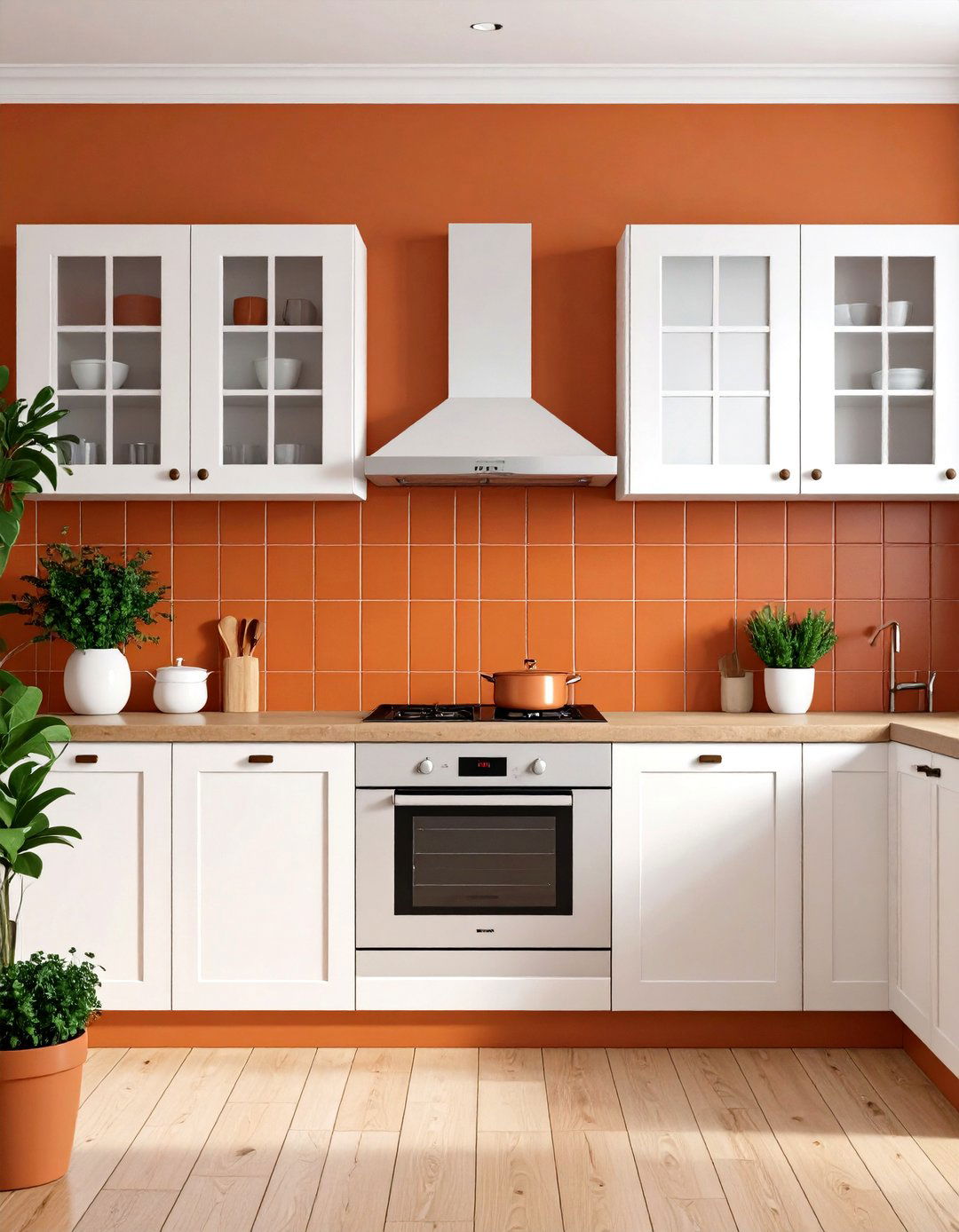
Terra cotta tiles made significant comebacks in 1980s kitchens, though the decade's versions featured orangier tones compared to today's more subdued, patinated appearances . These warm, earthy tiles provided natural texture and Mediterranean-inspired character that balanced the era's bold synthetic materials and bright color schemes. Terra cotta worked particularly well in kitchen backsplashes, creating warm focal points that complemented both painted and wood cabinets. The tiled range hood became a popular feature, often executed in terra cotta that added architectural interest . Kitchen islands and accent walls also benefited from terra cotta applications that introduced organic elements into spaces dominated by laminate and chrome finishes. Modern kitchens can incorporate terra cotta through backsplashes, floor accents, or decorative borders that add warmth and textural interest while honoring this distinctive 1980s material choice.
17. Kitchen Peninsula Designs with Upper Cabinet Storage
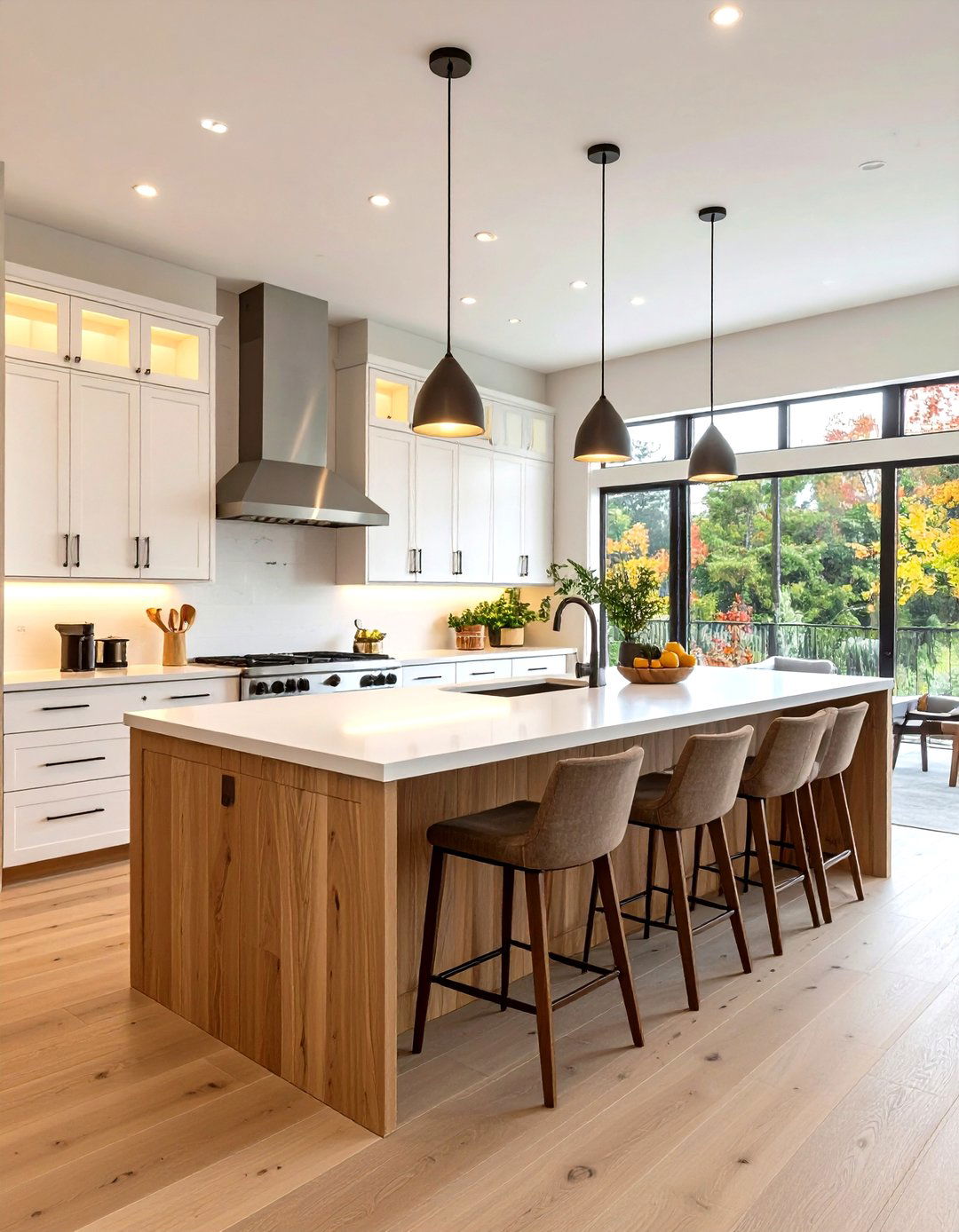
Peninsulas with upper cabinets hanging over them became popular features that divided kitchen and dining room spaces while maximizing storage . These architectural elements reflected the 1980s trend toward open floor plans while maintaining functional separation between cooking and eating areas. Kitchen peninsulas provided additional counter space for food preparation and casual dining while the overhead cabinets offered valuable storage for dishes and serving pieces. The design created natural gathering spots where family members could interact with cooks while maintaining workspace efficiency. Large islands and breakfast bars became kitchen mainstays that marked the evolution of kitchens as social spaces . Modern interpretations of this concept often eliminate upper cabinets in favor of open sight lines while maintaining the peninsula's practical benefits for storage, seating, and spatial definition in contemporary kitchen layouts.
18. Lucite Kitchen Furniture and Clear Accent Pieces
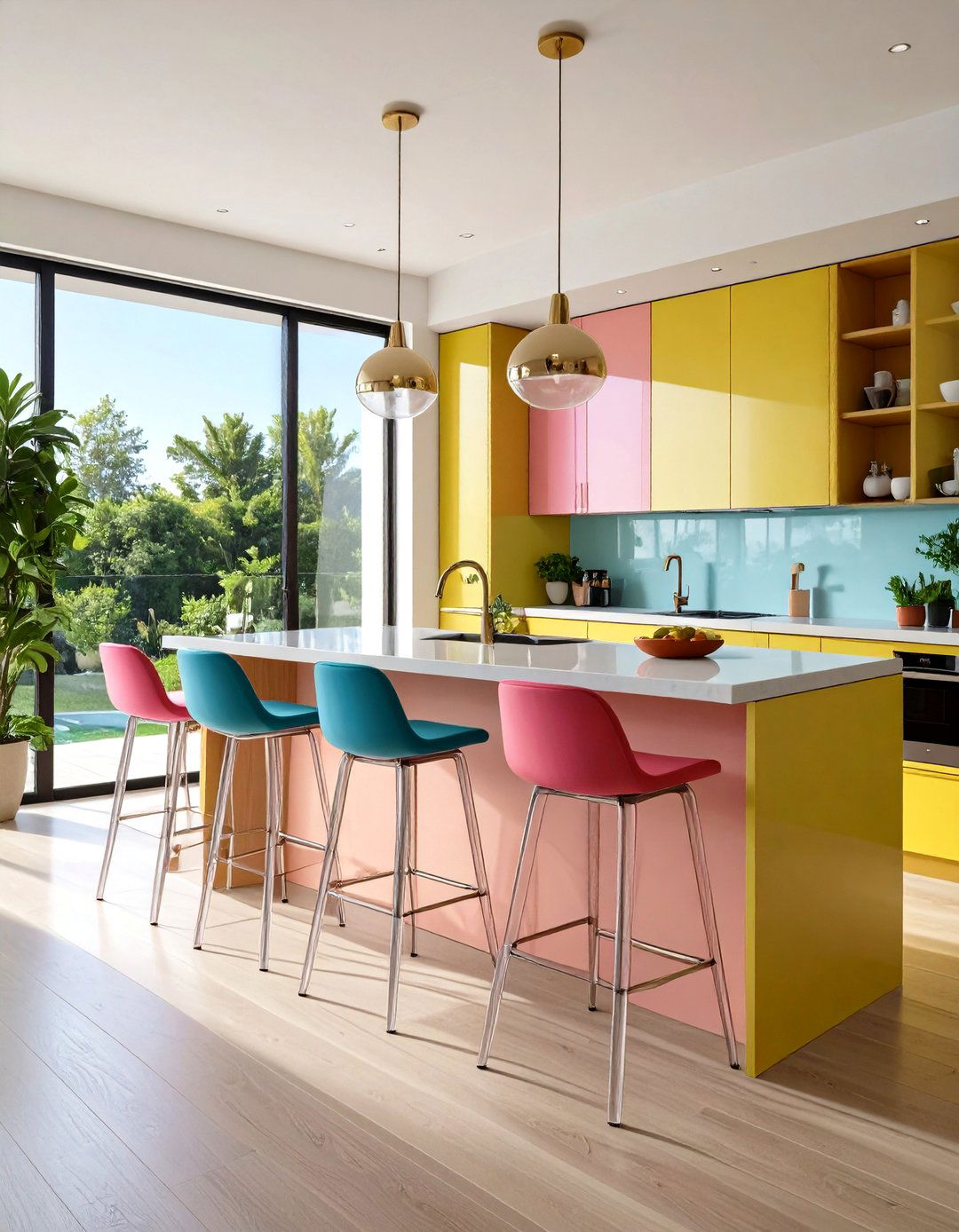
Lucite furniture swept across American kitchens during the 1980s, valued not only because its clear properties opened up rooms but also because of its tough, durable nature . Kitchen applications included bar stools, cabinet handles, decorative accessories, and even small appliance components that maintained functionality while appearing nearly invisible. This material choice reflected the decade's fascination with high-tech aesthetics and space-age materials that suggested futuristic living. Lucite elements worked particularly well in smaller kitchens where visual weight needed to be minimized while maintaining practical functionality. The clear properties helped create illusions of spaciousness that complemented the era's bold color choices . Contemporary kitchens can incorporate acrylic and clear resin elements through bar stools, pendant lighting, hardware details, or decorative objects that provide the same space-enhancing benefits with modern manufacturing improvements and design sophistication.
19. Hollywood Regency Kitchen Glamour and Statement Lighting
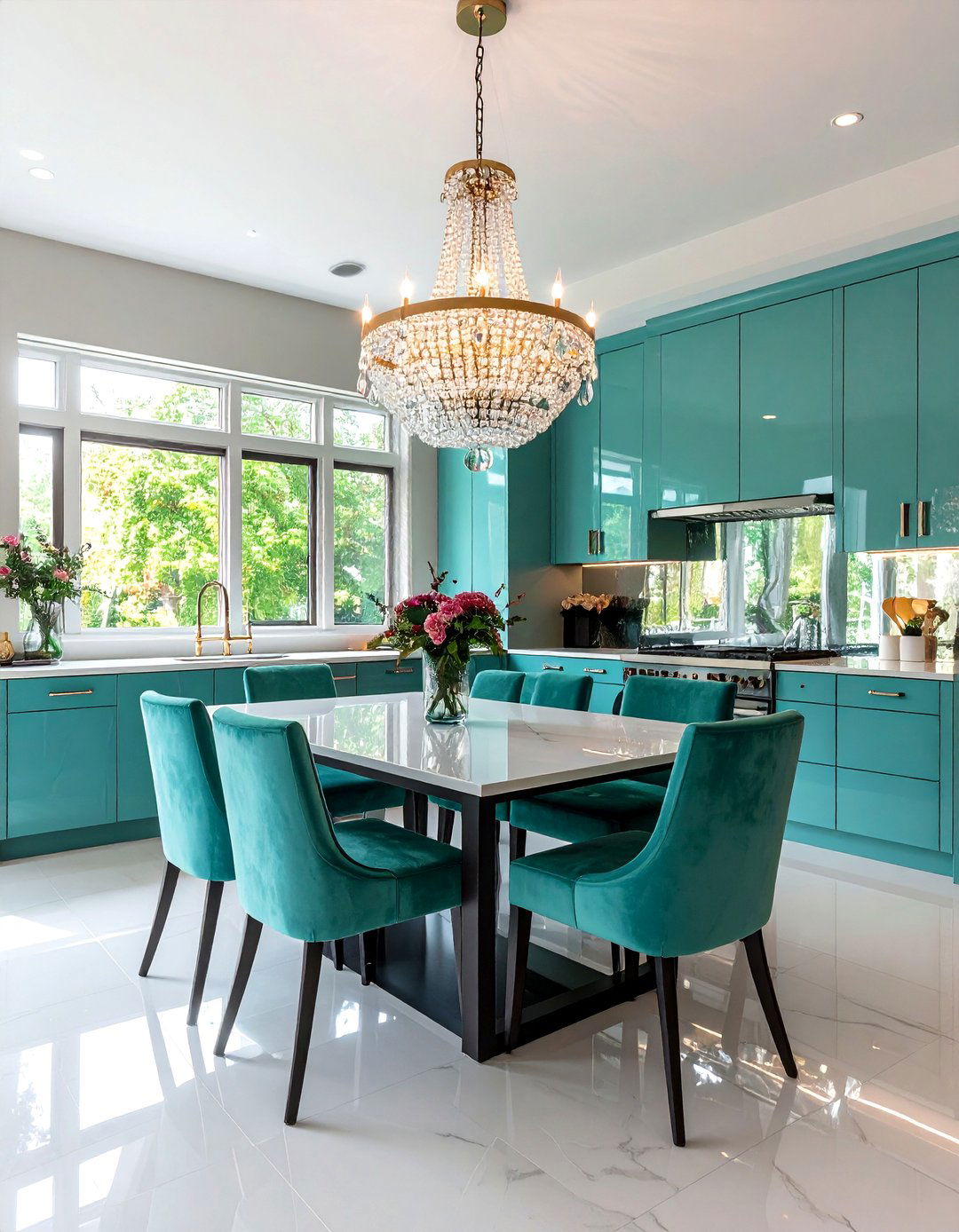
The Hollywood Regency design trend carried over from the 1970s into the 1980s, introducing timeless glamour through oversized chandeliers and rich color combinations that added fun and sophistication to kitchen spaces . This style brought dramatic lighting fixtures, metallic accents, and bold patterns that elevated everyday kitchens into entertaining spaces worthy of movie stars. Statement pieces like patterned dining tables and dramatic wall treatments created contrast and visual interest . Kitchen implementations included crystal or chrome chandeliers over dining areas, mirrored backsplashes, and high-gloss cabinet finishes that reflected light and created luxury atmospheres. Metallic accents and chrome pendant lighting provided industrial-style sophistication . Modern kitchens can capture this glamorous energy through statement lighting fixtures, brass hardware, and high-contrast color schemes that bring red carpet drama to everyday cooking and dining experiences.
20. Open Kitchen Floor Plans with Social Island Configurations
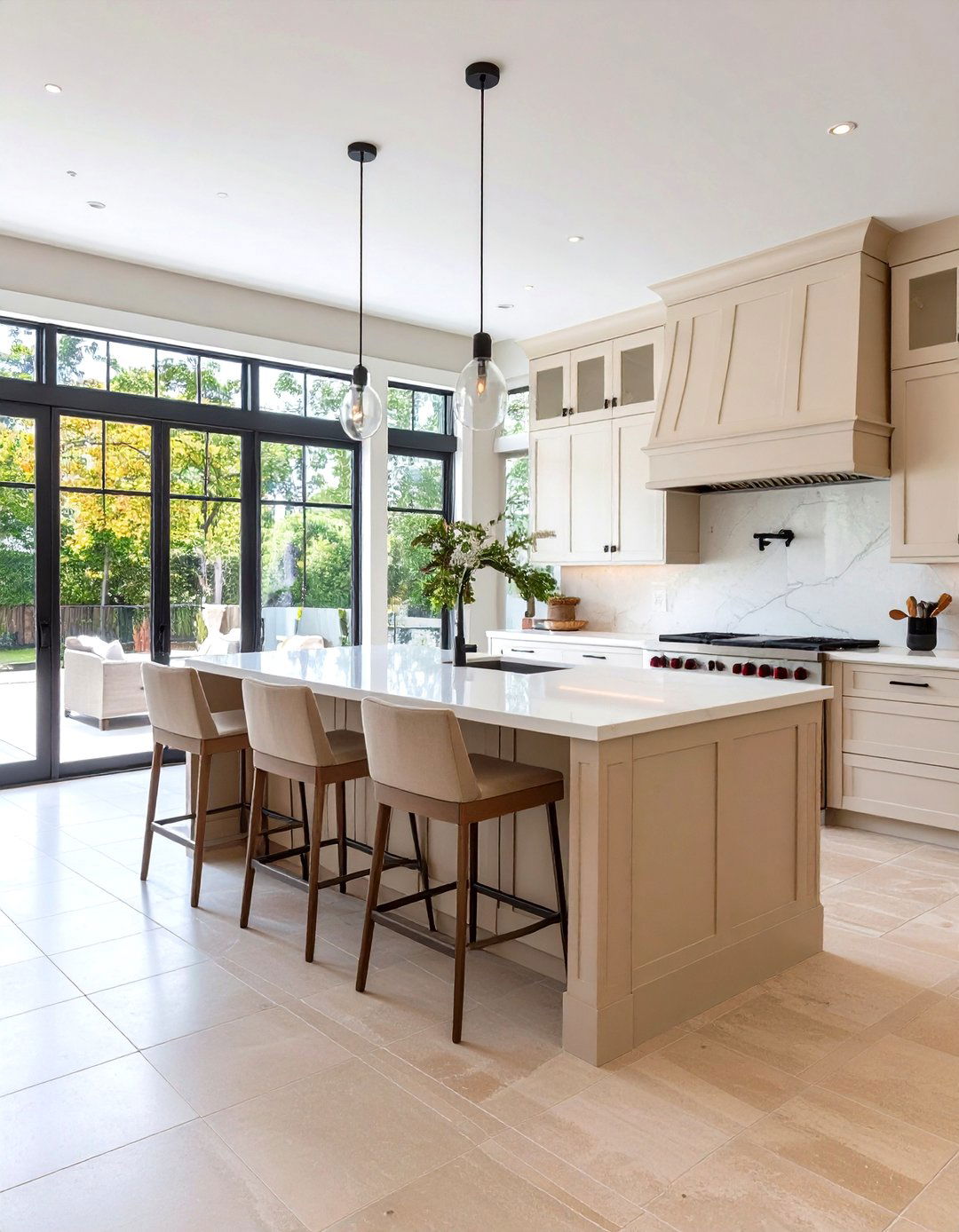
The 1980s saw the beginning of open floor plans as kitchens began sporting large islands and breakfast bars, with the kitchen becoming less of a domestic zone and more of a gathering space for families . The open kitchen meant more neutral colors like white and beige countertops and matching tile as spaces needed to coordinate with adjacent living areas . This fundamental shift in kitchen planning reflected changing lifestyles where cooking became a social activity rather than isolated domestic work. Kitchen islands provided central focal points that encouraged interaction while maintaining efficient work triangles for serious cooking tasks. Today, the island is a kitchen mainstay that marked the evolution of kitchens as social spaces . Modern open-concept designs continue this 1980s innovation through oversized islands, integrated seating areas, and seamless transitions between kitchen and living spaces that maintain the social connectivity while incorporating contemporary materials and technology.
Conclusion:
The innovative spirit of 1980s kitchen design continues to influence contemporary spaces through its fearless approach to color, pattern, and functionality. These twenty distinctive ideas demonstrate how the decade's bold aesthetic choices and practical innovations created kitchens that were both visually striking and remarkably livable. From Euro-style cabinets to track lighting systems, from neon color schemes to open floor plans, the 1980s established design principles that remain relevant for today's homeowners seeking personality-driven spaces. Modern interpretations of these classic elements can capture the era's optimistic energy while incorporating contemporary materials and technology. Whether embracing the full retro aesthetic or selecting specific elements for accent purposes, these 1980s kitchen ideas offer endless possibilities for creating vibrant, functional spaces that celebrate both heritage and innovation in equal measure.


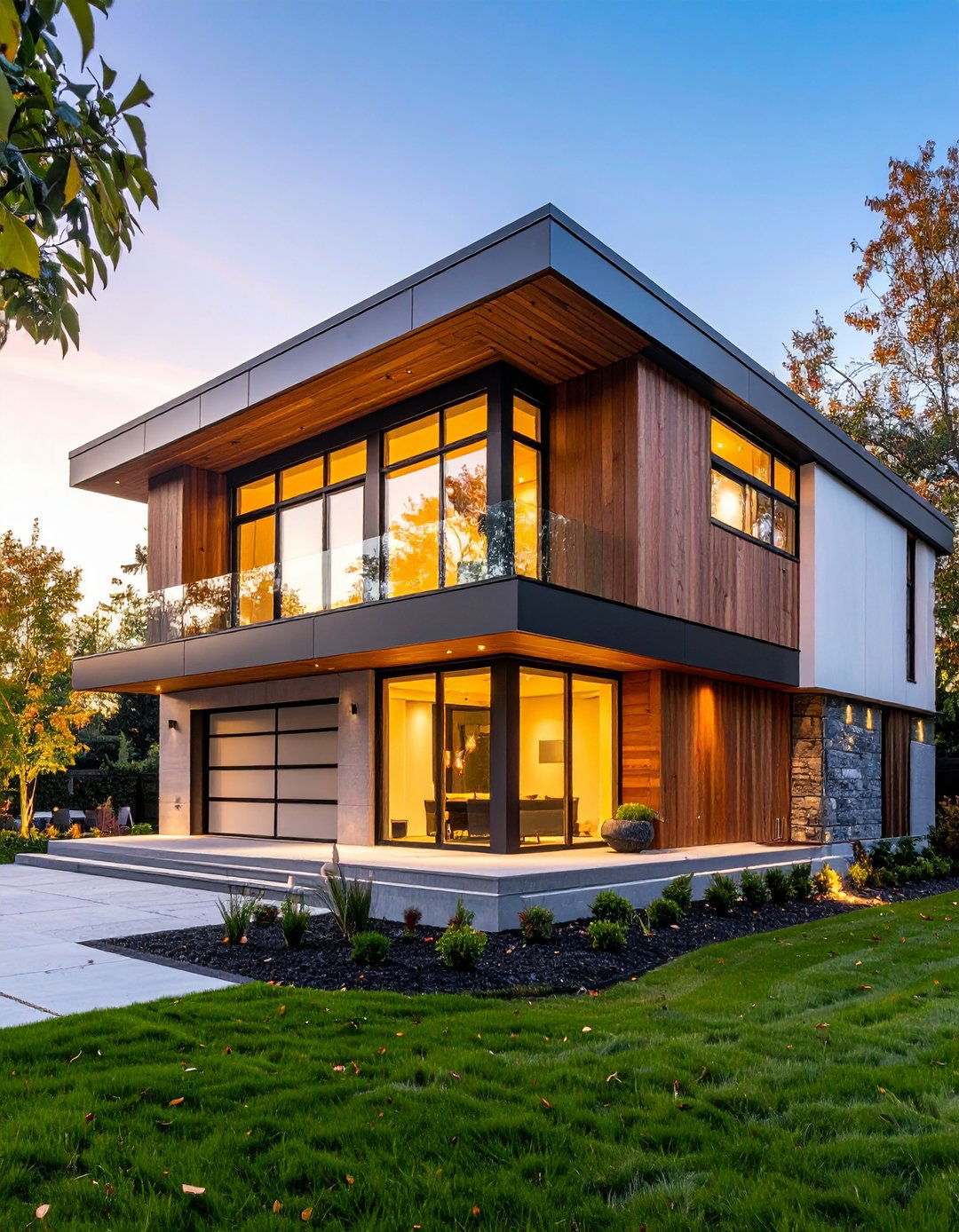
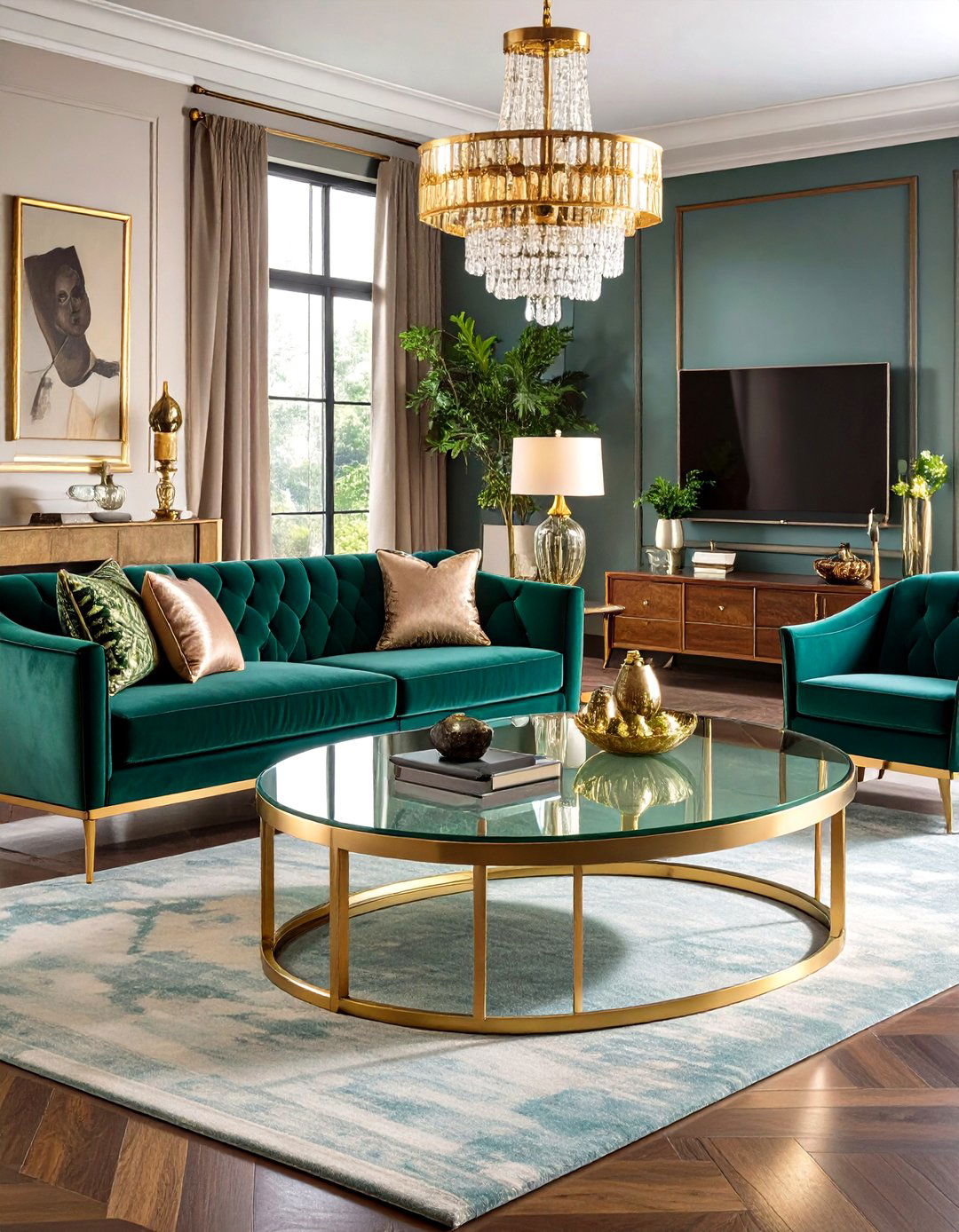
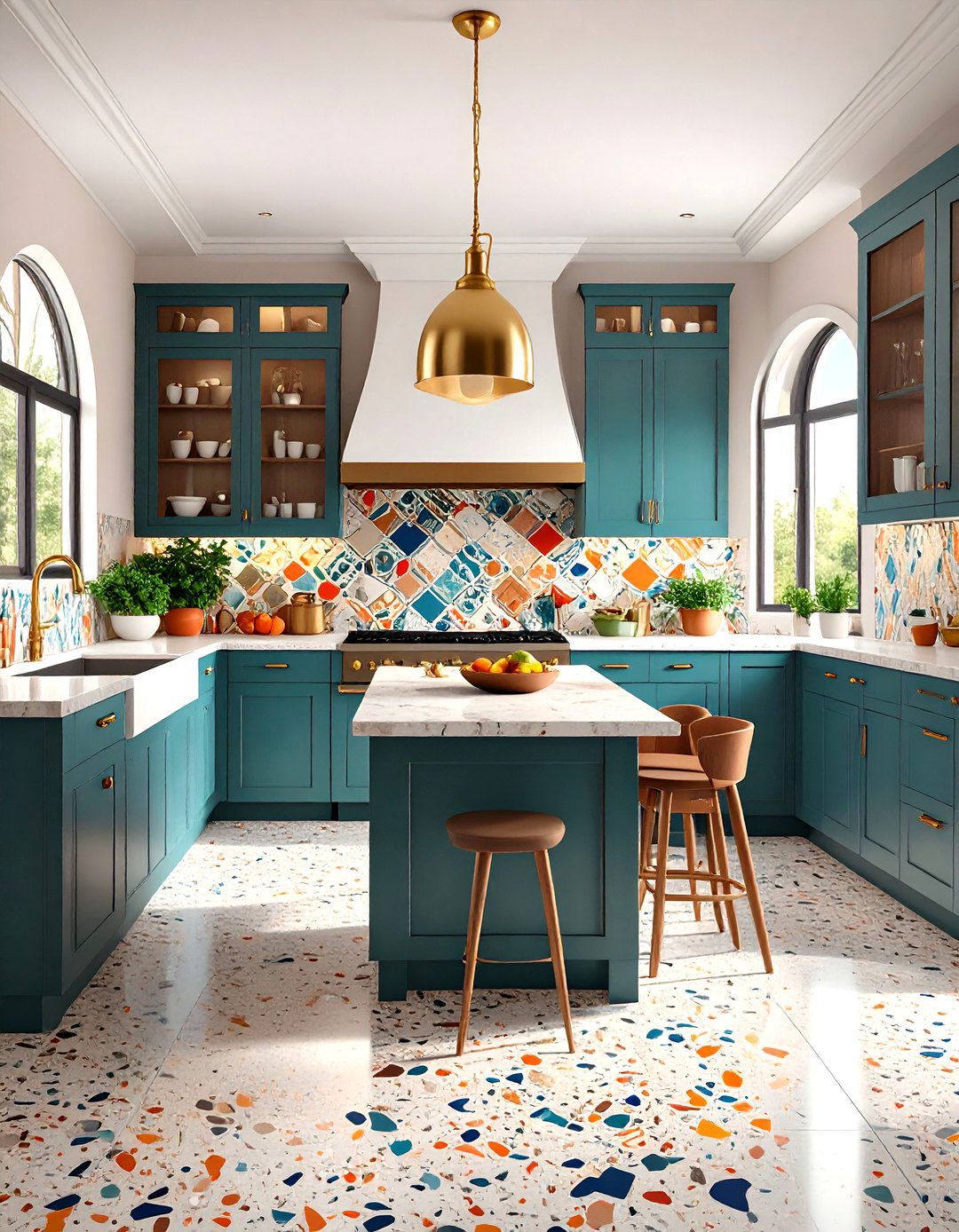
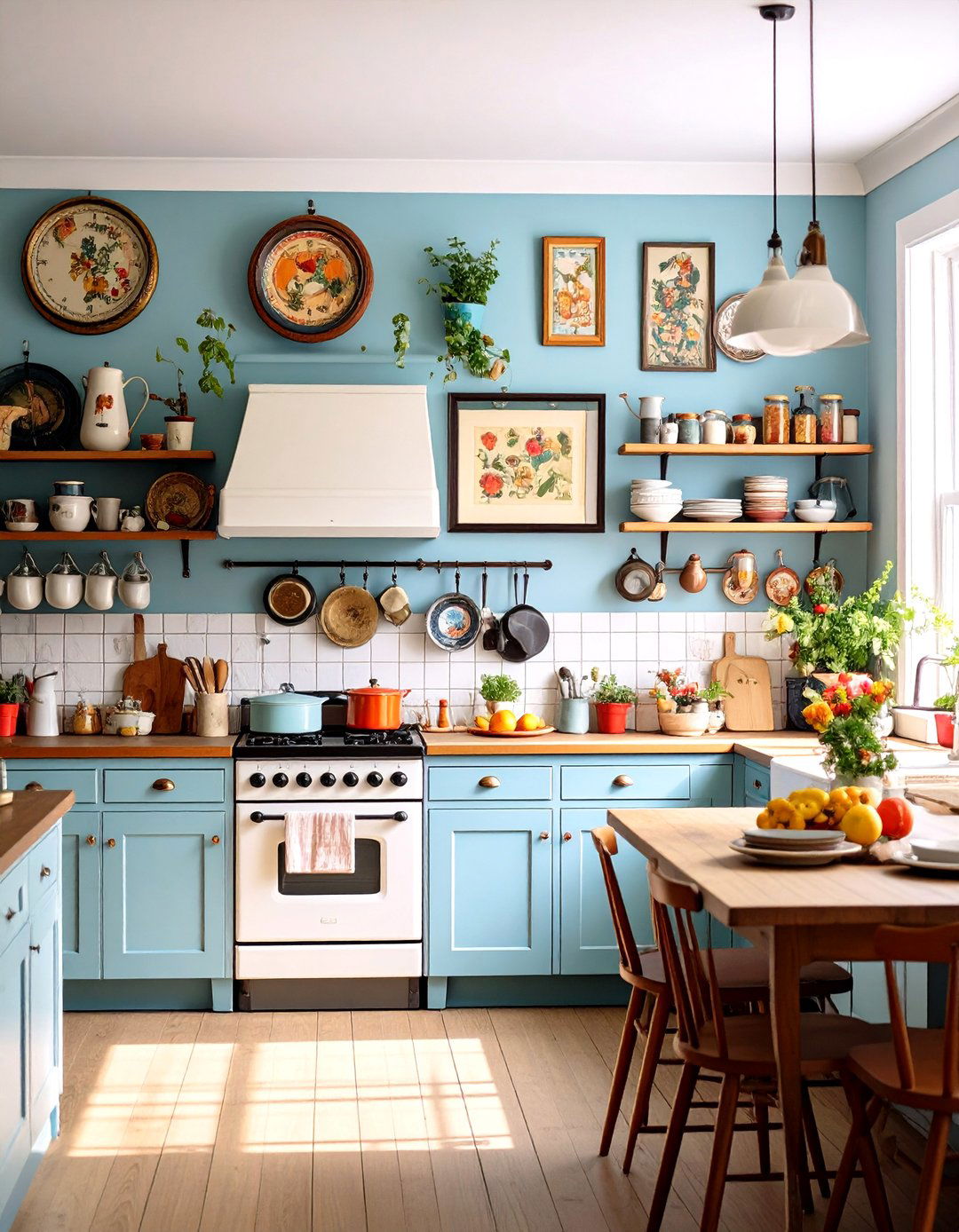
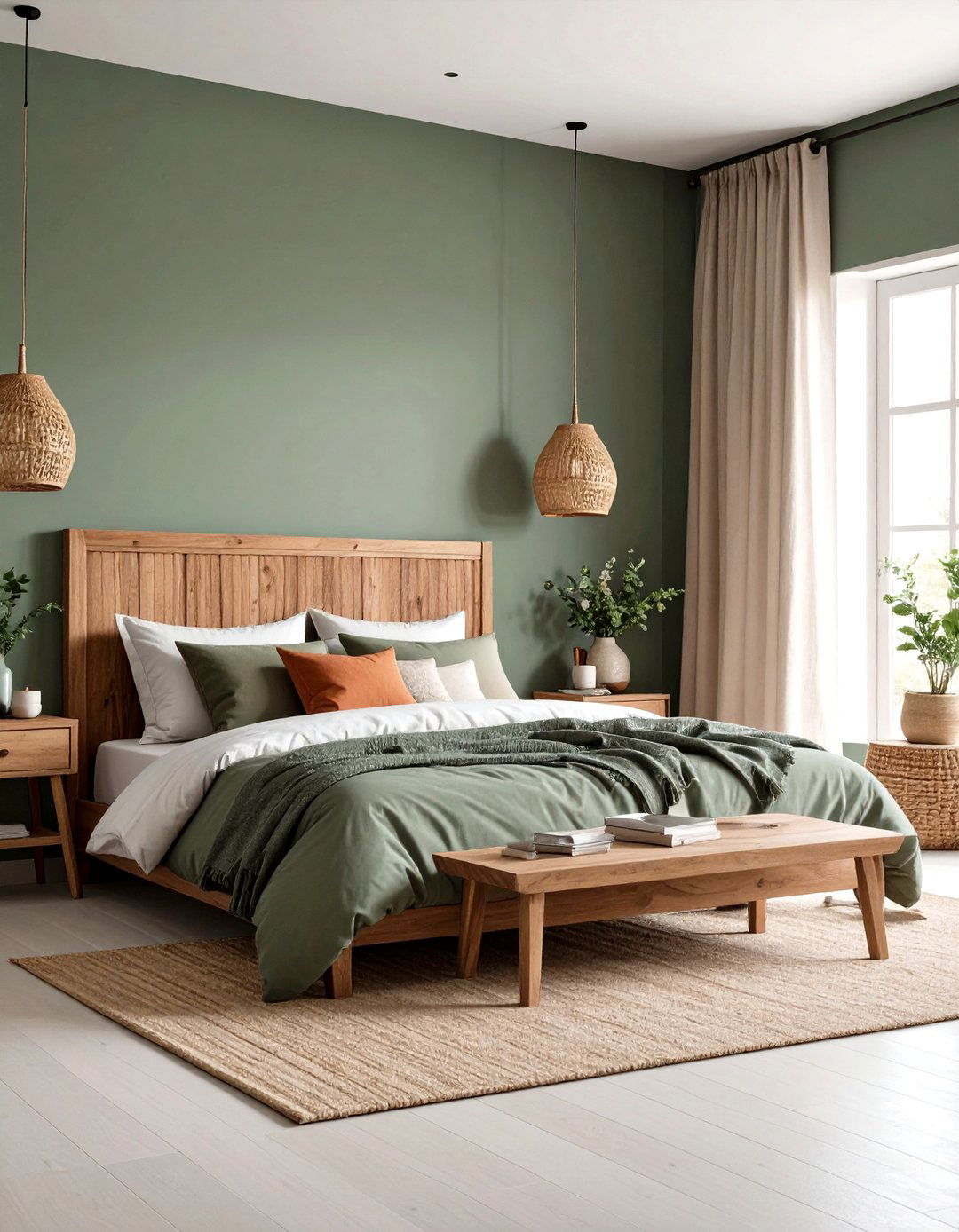

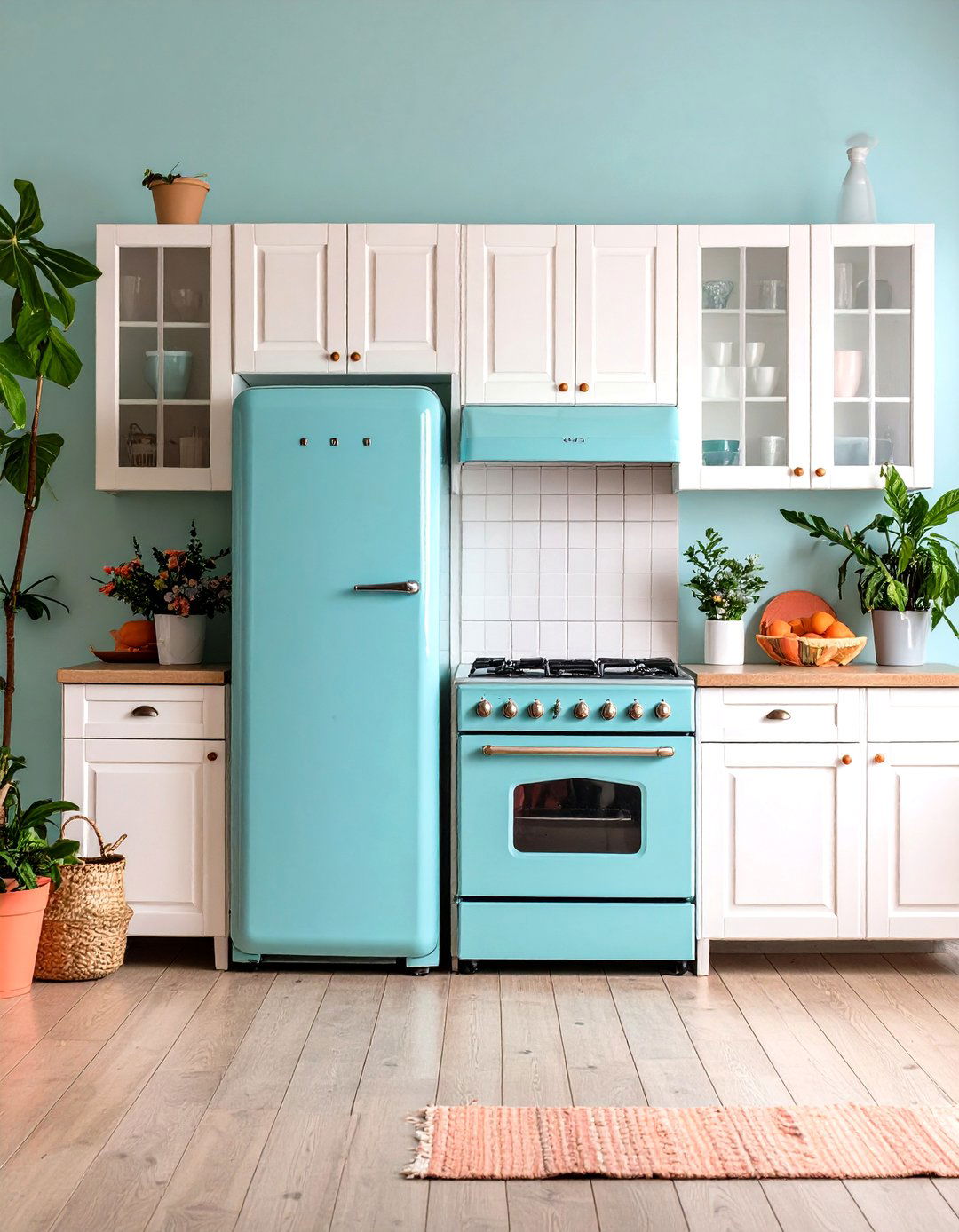

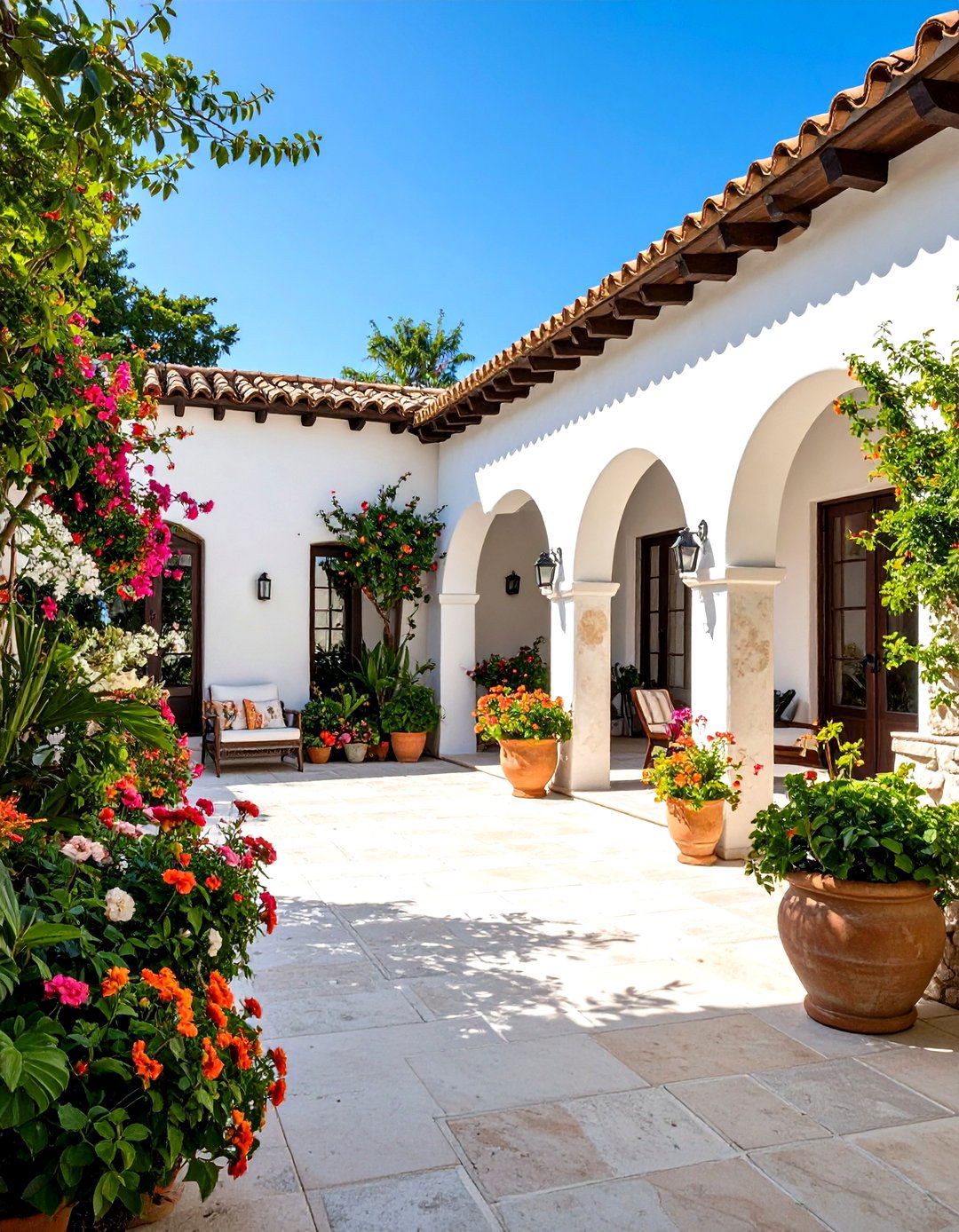

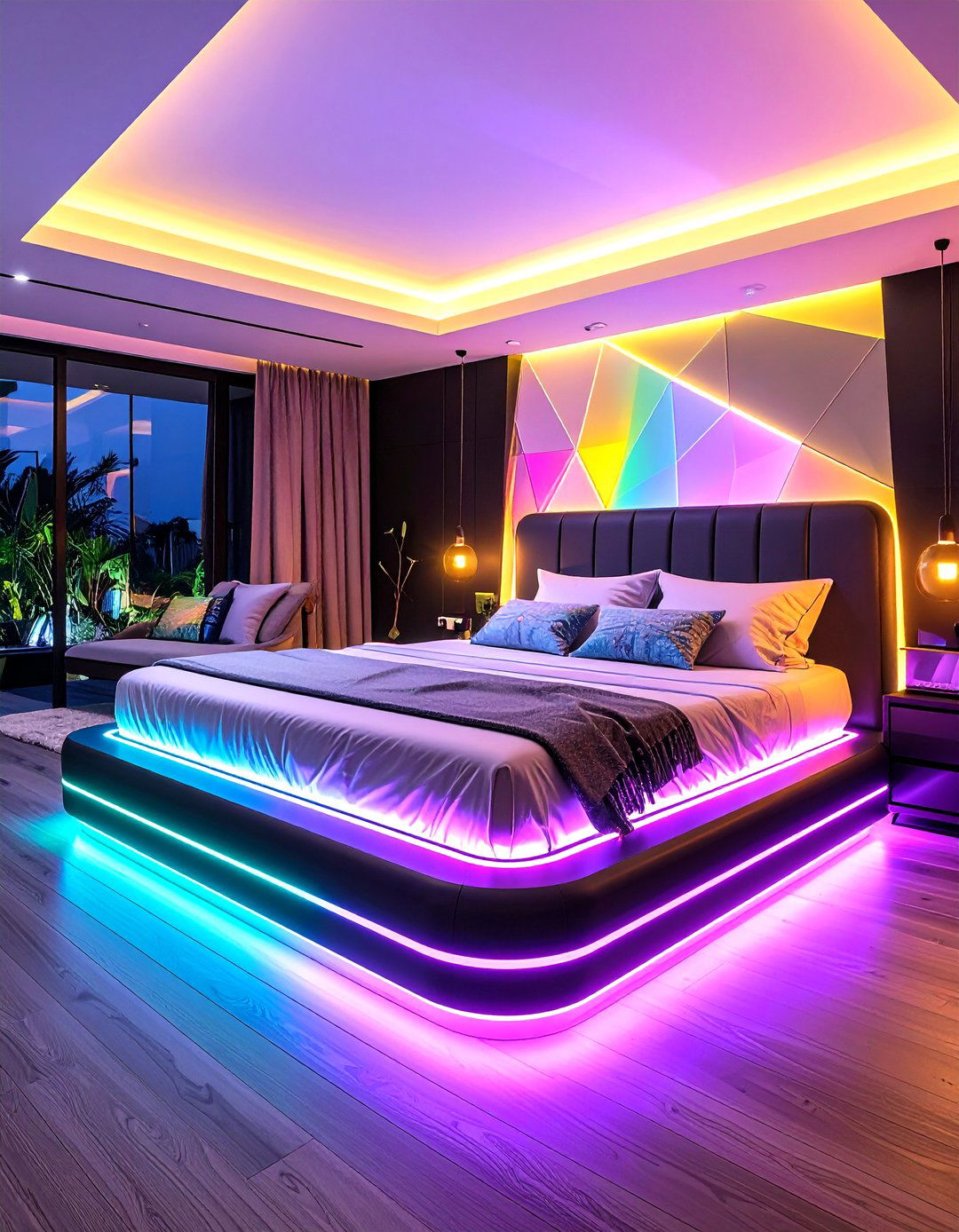
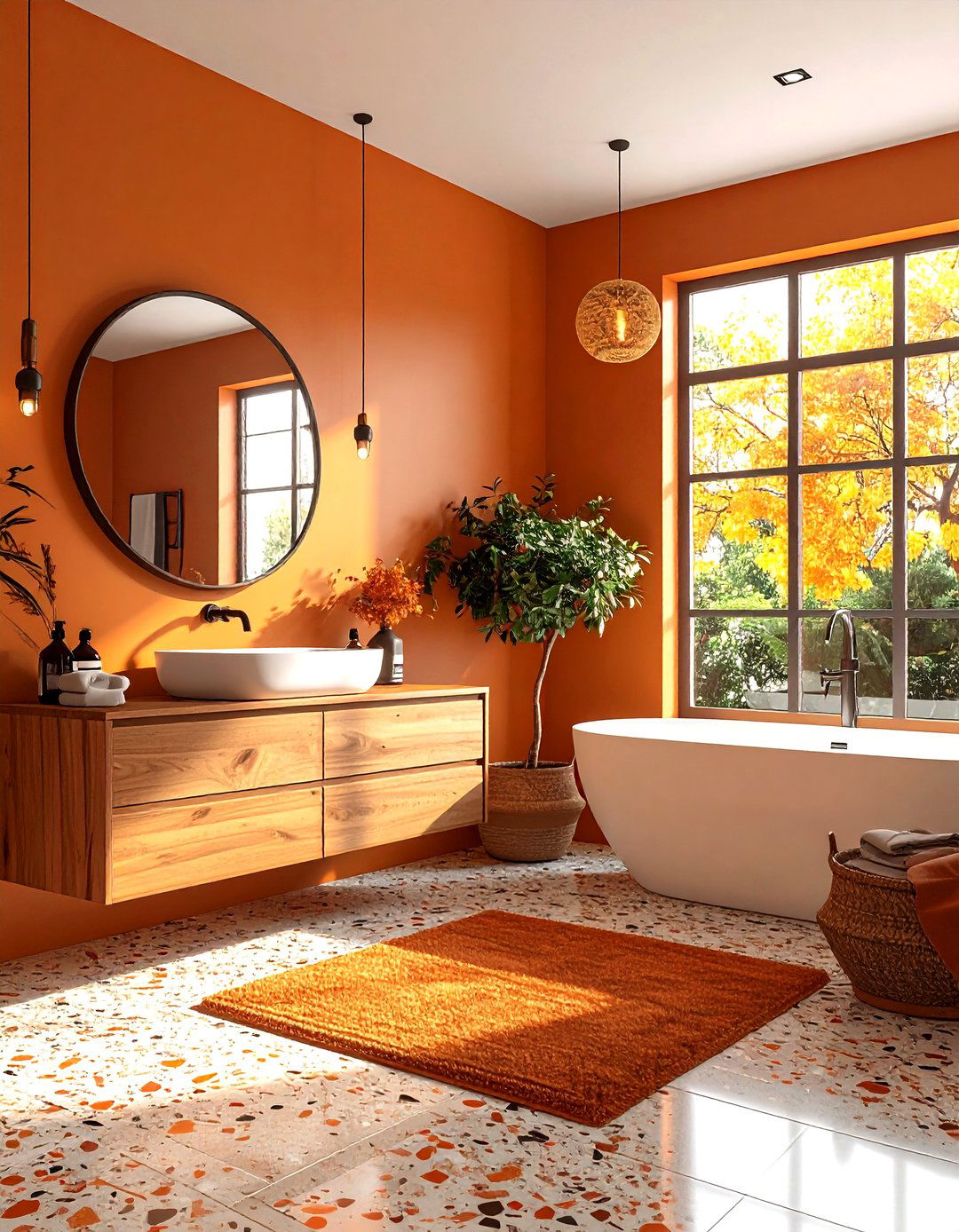
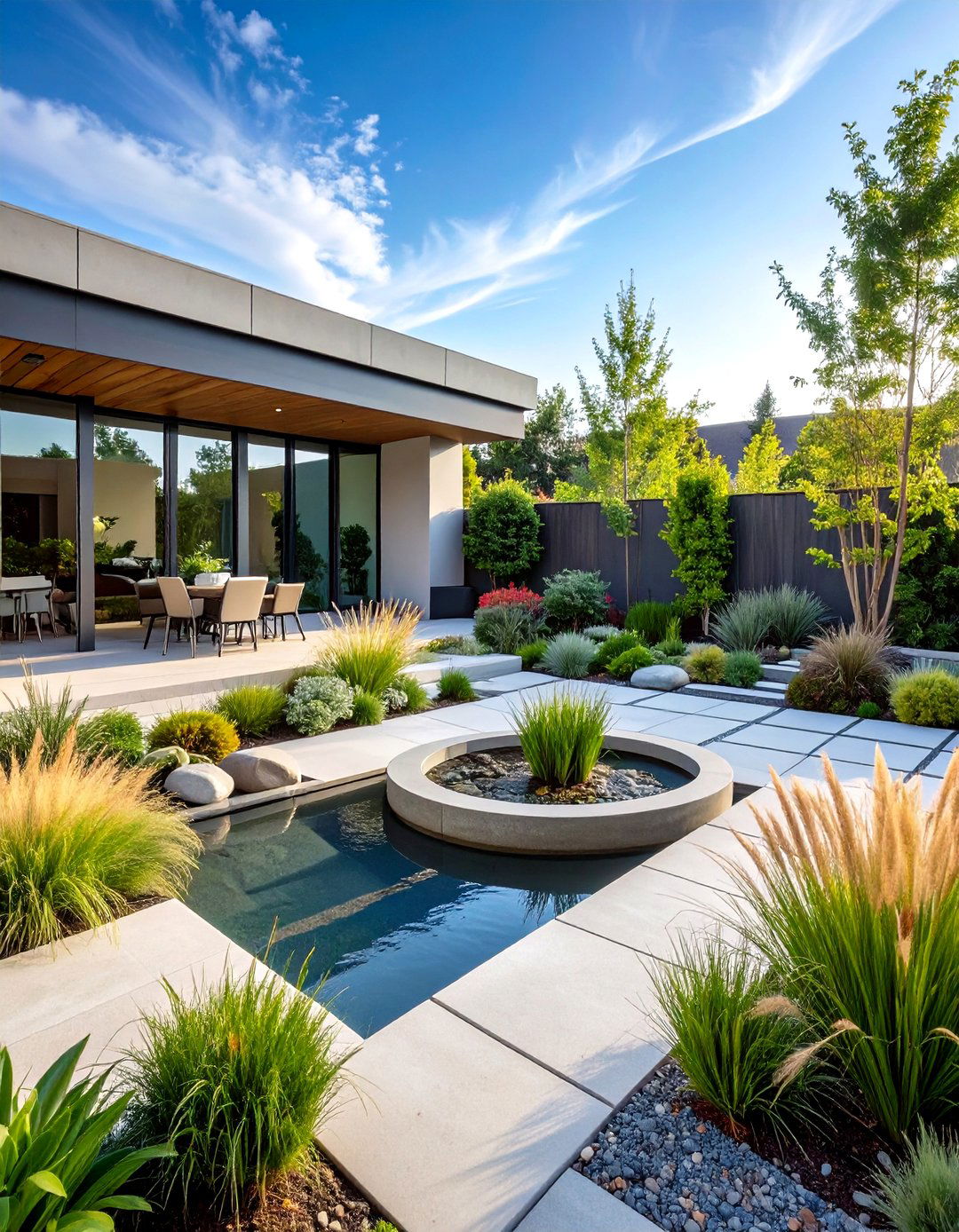
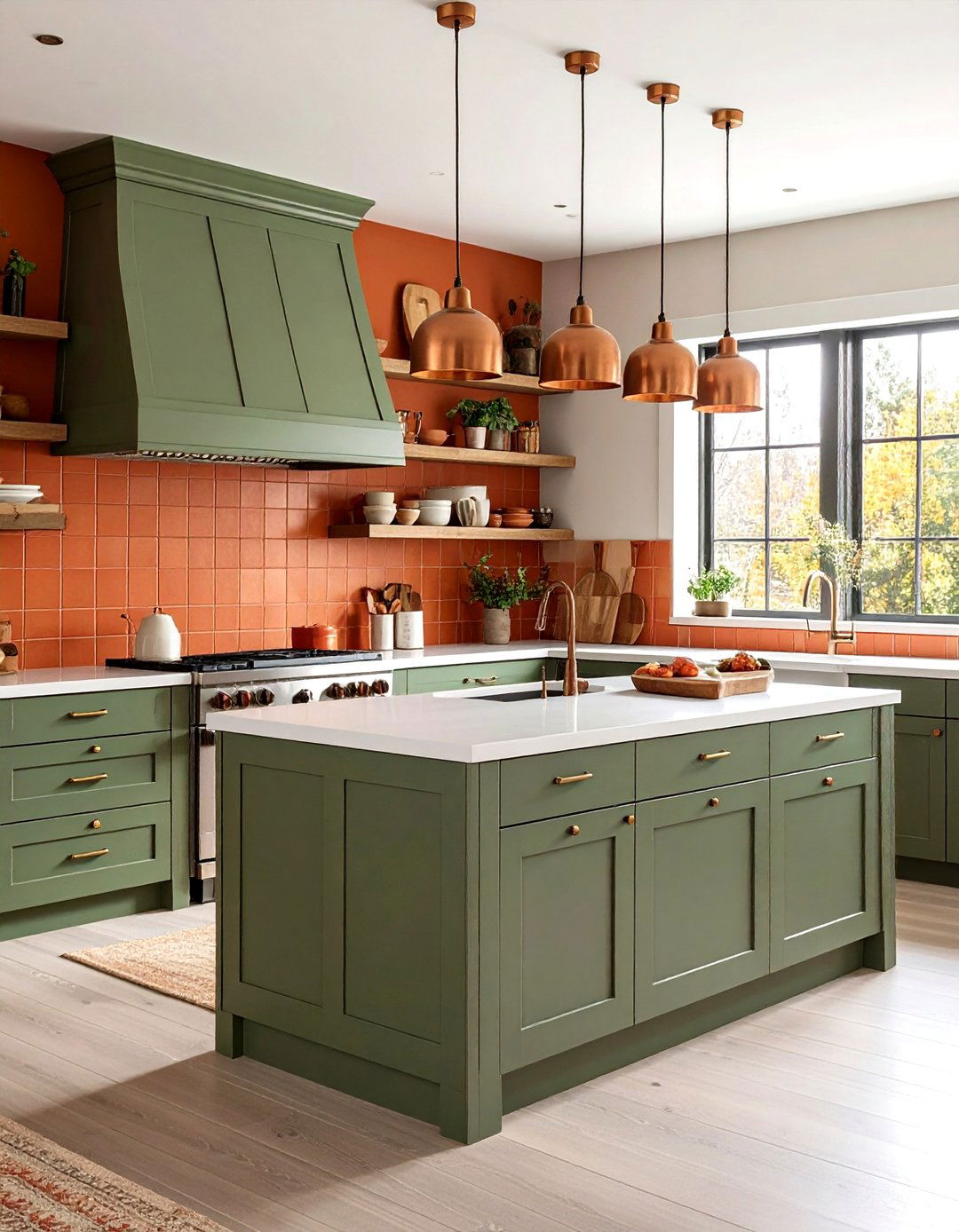
Leave a Reply